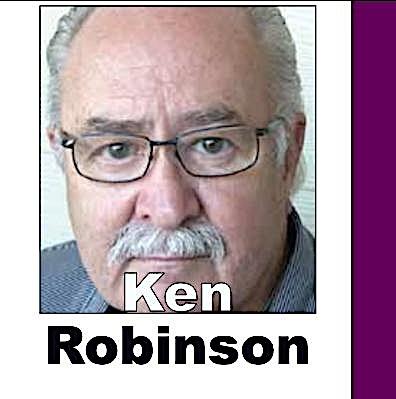Ken's view: How I learned to work
Fri, 05/16/2025
By Ken Robinson
Managing Editor
How I learned to work
At age 10, I approached the publisher of the White Center News and told him I wanted to earn money to buy a bicycle. He liked the cut of my jib and said he had a job opening: Route 13E was relatively flat and only two blocks from home, the publisher told me.He said I could start right away. I let him know that I would need a canvas bag like I’d seen on other kids delivering papers. He said he would provide one but it may not be new, could have a fewer holes and might be blackened from ink from the papers. I would have to earn a new bag.
The pay was a mix of what what was called ‘voluntary’ and subscriber pay. That meant I might have to deliver a paper to houses that paid only if (1. Someone was home when I went to collect at the end of the month or 2. They chose to pay me for the service) About half the ‘customers’ paid. Fifty cents per month, or 12 and a half cents a delivery.
The job was an after-school task. Bundles of the current edition were left at drop points throughout the community, sometimes in a ramshackle shed and sometimes out in the weather. My route had 84 customers in a three -block are between 2nd and 4th avenues., west from the Top Hat area near Beverly Park.
Because it is Seattle and we have only those three days a year without rain, I stuck to the postal carrier’s creed and delivered rain and once in a while, shine. But there was also snow, sleet, hail, mud and mad dogs. And sometimes, mad householders. Not everyone wanted a newspaper.
Of course, I wore a hat.
The paper was published every Wednesday. That was the day the grocery ads broke. Getting the paper to homes was critical. Later, the grocery day was changed to Thursday. So the delivery date of the paper changed too. Back then, all the big grocery chains had an ad: Safeway, Tradewell, A&P all had a page in the paper.
The paper had to be delivered as scheduled no matter what other demands on my time were made. Besides, some other kid might want the job, might want a bike of his own. So you had to stick with it.
About halfway along 2nd Avenue, there was little grocery store that was also the residence of the store owner. I often stopped there, if had some loose change, to buy a single-service berry pie or a Hostess chocolate cream-filled cupcake. One day, after buying said cupcake, I went outside eat it and at the same time, prank the store owner but sticking a plastic worm into one of the two cupcakes in the pack. I took the cupcake back inside and showed the owner the faulty product. He grabbed it for a closer look, agreed that it was a worm and threw it into a trash can. I thought that was a tacky thing to do and stopped trading with that grumpy old man. I would get my cupcakes elsewhere in the future.
Another customer was the home of a kid my age. His name was Desmond Kester. I remember him because his name is unusual and because his father used dynamite to blow up a big stump in our yard in Salmon Creek so Dad could build garage.
On days when I wanted to collect for delivery, I tried to time it so people would likely be at home, around dinner time. That often meant it was dark when I knocked on a door. People sometimes paid with a multiple of coins—dimes, nickel and even pennies. So by the end of the route, I would have a wad of cash with me.
I did not have a specific goal for collection because I had never researched the cost of bicycles. I just know I had to get as much money as possible.
One icy afternoon near Christmas, I struggled to haul the heavier holiday edition of the papers. The light was fading by 4:30 as I began the route, cold and wet. My first stop was a corner business in Top Hat. It was a refrigeration contractor. I pushed open the wood-framed glass door, fogged from the weather and stepped inside to deliver the paper. A white-haired man at a desk thanked me for the paper. He commented on my resolve to make sure he got his paper. Then he asked me to step forward and handed me two .50 cent coins. It was the biggest tip I had ever gotten.
A little later on the route, I came up to the Kester house and happened to look down at a shiny glint in the icy sidewalk. There I spotted a quarter, two dimes and a nickel lodged loosely in the compacted ice. I took the money, enlivened by my good fortune and the notion that I was not much closer to getting a new bike. If Desmond Kester reads this, I spent the money on a bike. Eventually, the bike wore out.
I kept that route for almost a year, when I got an executive position at the newspaper, working out of the office after school. I stayed with the company for almost 70 years.


